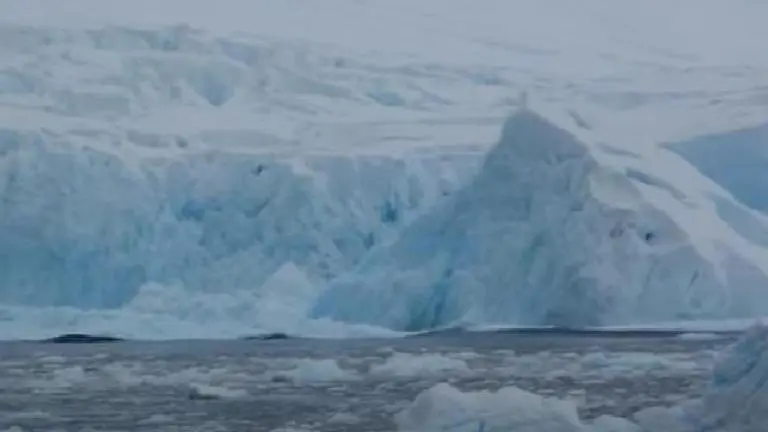Updated 3 December 2022 at 14:00 IST
Glacier as big as 10 football fields breaks down in Antarctica | WATCH
Researchers have released footage of a massive calving event that took place in Antarctica as the William Glacier broke away into a thousand small pieces
- Science News
- 3 min read

Researchers have released the footage of a massive calving event that took place in Antarctica as the William Glacier broke away into a thousand small pieces. The findings of the research have been published in the journal Science Advances. Researchers believe that this event is likely to cause vigorous internal waves, triggering internal tsunamis at the surface of the ocean.
The findings of the survey have been released now; the event took place two years ago when the team aboard the British Antarctic Survey’s RRS James Clark Ross research ship was taking ocean measurements off the Antarctic Peninsula.
Glacier as big as 10 football fields breaks down in Antarctica | WATCH
Every year, William Glacier typically has at least two large calving events. The team revealed that the front part of the glacier is 40 m above sea level, and it was found that this event broke off around 78,000 square metres of ice, which is similar to 10 football fields. The findings revealed that before the glacier front disintegrated, the ocean water at a depth of 50–100 m was warm. It was observed that the calving changed the temperature dramatically across different depths.
The experts who carried out the research work claimed that the internal tsunami waves are an important factor in ocean mixing; they also affect marine life, change temperatures at different depths, and determine further melting of the ice in the ocean. The data used by the researchers were taken from Europe's Copernicus Sentinel-1 satellites when the ship was near the Peninsula and captured a radar image.
Advertisement
"This was remarkable to see, and we were lucky to be in the right place at the right time. Lots of glaciers end in the sea, and their fronts regularly split off into icebergs. This can cause big surface waves, but we know now that it also creates waves inside the ocean. These internal waves cause the sea to mix, and this affects life in the sea, how warm it is at different depths, and how much ice it can melt," Michael Meredith, the lead author of the paper, said.
Internal tsunamis have been noticed in a few places, caused by landslides, and no one had noticed that the event was happening around Antarctica. Other places with glaciers are also likely to be affected, including Greenland and elsewhere in the Arctic, the report said. Glaciers around the world are slowly melting due to climate change.
Image: YT/@European Space Agency
Published By : Amrit Burman
Published On: 3 December 2022 at 13:40 IST
